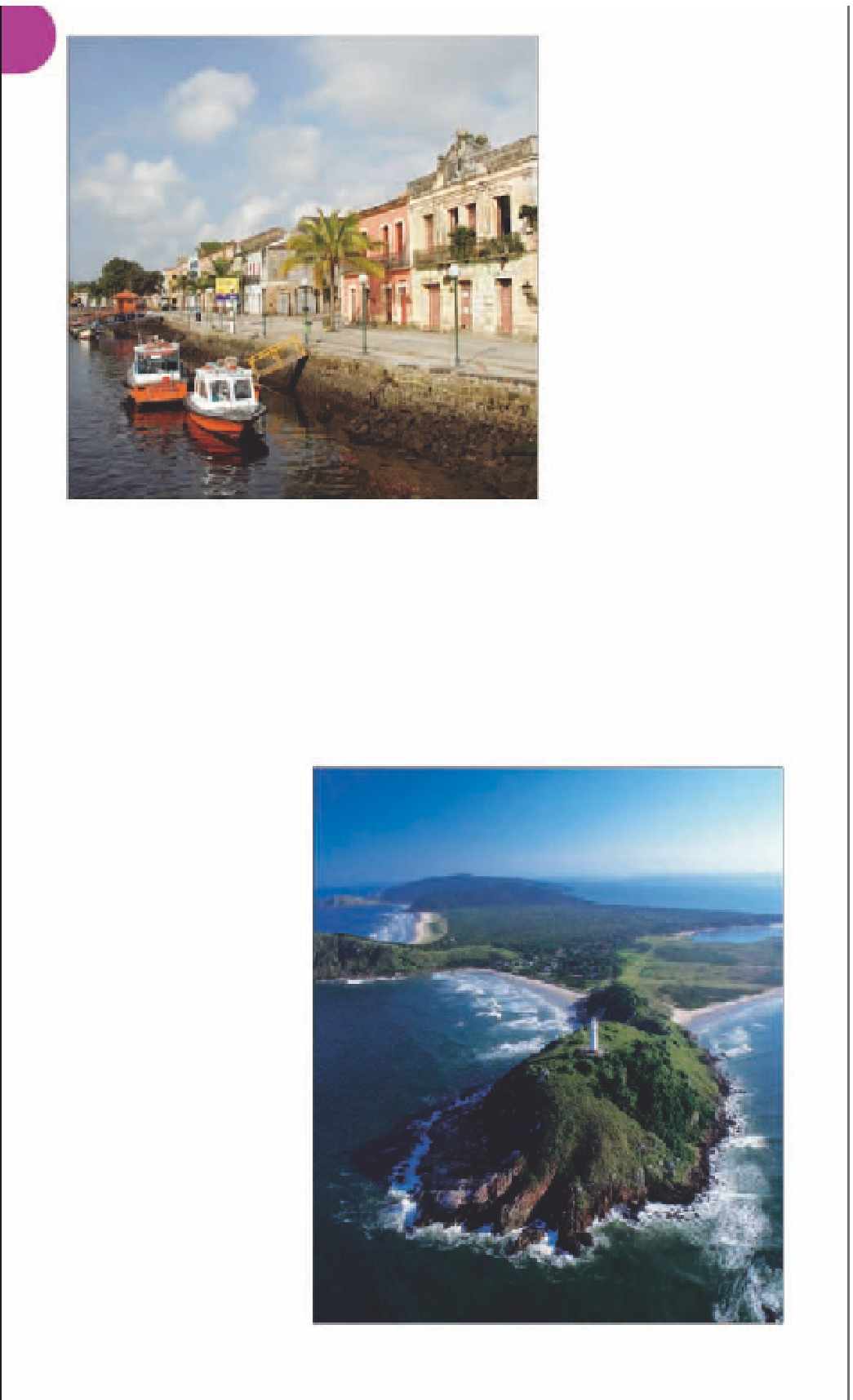Travel Reference
In-Depth Information
Ilha do Mel
4
Paraná
.
*
1,200.
g
from
Paranaguá.
www
.ilhadomelonline.
com.br
The most beautiful of Paraná's
islands, Ilha do Mel offers a
combination of almost entirely
undeveloped beaches, iso-
lated coves, and sandy trails.
The island guards the
entrance to Paranaguá Bay
and there are well-preserved
ruins of the mid-18th century
fort,
Fortaleza de Nossa
Senhora dos Prazeres
, that
was constructed to ward off
English, French, and Spanish
attacks. The
Farol das Conchas
(Conchas Lighthouse),
imported from Glasgow and
placed on the island's most
easterly point in 1872, is the
best place for a stunning
panoramic view of the island,
bay, and mountains.
Tourist development is
low- key. Visitor numbers are
controlled, and there are no
roads or motor vehicles on the
island. Building work is also
strictly regulated.
Pousadas
are all small and very simple,
but most are all the more
charming for this. The Ilha do
Mel attracts predominantly
Colonial buildings along the waterfront in Paranaguá
Paranaguá
3
Paraná.
*
142,000.
£
from
Curitiba.
@
n
Rua Padre Albino
45, (041) 3420 2940.
www
.paranagua.pr.gov.br
architecture. The simple,
whitewashed building has
undergone renovation in
recent years and contains a
small collection of sacred art.
E
Museu de Arqueológia
e Etnologia
Rua 15 de Novembro 575.
Tel
(041) 3423 2511.
#
noon-6pm
Tue-Sun.
&
Founded in 1585, Paranaguá
is the oldest city in Paraná
and is one of Brazil's most
important ports today.
Paranaguá's historic center
is small enough to explore
on foot. The city's oldest
buildings are located in the
compact historic core on the
shore of Paranaguá Bay.
Most of these dilapidated,
but distinguished-looking,
19th-century merchants'
houses now serve as shops
or inexpensive hotels. Also
along the shore is the former
Colégio dos Jesuítas, an
imposing building that now
houses the
Museu de
Arqueológia e Etnologia
, with
a rich collection relating to
the region's indigenous inhab-
itants and popular culture.
Two churches in the historic
center are worth seeking out.
The
Igreja de Nossa Senhora
do Rosário
, built between
1575 and 1578, has suffered
considerable changes over
the centuries, but the main
structure retains a Portuguese
colonial appearance. Built in
1784 for slaves, the
Igreja de
São Benedito
is an excellent
example of popular colonial
Farol das Conchas lighthouse on the eastern tip of Ilha do Mel
For hotels and restaurants in this region see pp386-8 and pp410-12






































